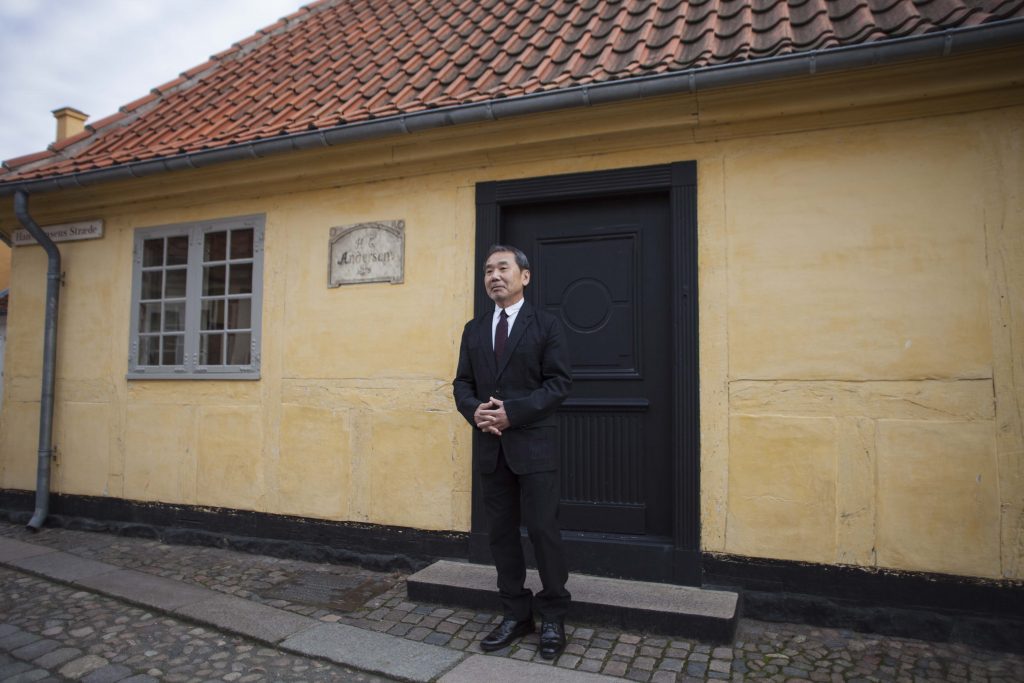This month, November 2016, Haruki Murakami received the Hans
Christian Andersen Literature Award. He refers to Andersen’s tale “The Shadow”
(you can read the story here),
which is woven around the Faustian theme of losing, or selling the
shadow, then being overtaken by it (see below an excerpt from Enemy, Cripple,
Beggar: Shadows in the Hero’s Path).
Murakami warned against excluding outsiders and rewriting
history. “No matter how high a wall we build to keep intruders out, no matter
how strictly we exclude outsiders, no matter how much we rewrite history to
suit us, we just end up damaging and hurting ourselves,” Murakami said.
Both individuals and societies need to face their shadow; “we
have to, when necessary, face our own shadows, confront them, and sometimes
even work with them,” he said in his acceptance speech.
And he is of course right, because if we don’t face the
shadow, however difficult and aggravating that may be, the shadow has a
Golem-like tendency to rise up against us – whether as individuals or in
society.
An excerpt from Enemy, Cripple, Beggar: Shadows in the
Hero’s Path (pp. 82-3):
The shadow is the most accessible
and the easiest to experience of those archetypes that have a “disturbing
influence on the ego,” says Jung, “for its nature can in large measure be
inferred from the contents of the personal unconscious.” Consequently, the shadow
is often considered to be synonymous with the personal unconscious, or the
Freudian idea of the unconscious as container of repressed “instinctual
representatives.”
Indeed, “To the extent that the shadow is unconscious it
corresponds to the concept of the ‘personal unconscious’,” which, says Jung,
“contains lost memories, painful ideas that are repressed… subliminal
perceptions… and finally, contents that are not yet ripe for consciousness.”
Jung then continues, saying that the personal unconscious corresponds to “the
figure of the shadow so frequently met with in dreams.” He then explains that
by the shadow he means “the ‘negative’ side of the personality, the sum of all
those unpleasant qualities we like to hide, together with the insufficiently
developed functions and the contents of the personal unconscious.”
Yet, truth
and honesty thrive in the shadow, however heavy it is to carry. While we hide
the shadow from the light, it is dangerous to appear openly without it. Or,
rather, it is dangerous to appear in the open, if we are too good and deny
having a shadow, because then we come across as not having a soul.
In
Chamisso’s book Peter Schlemihl: The Shadowless Man, the artist tells
the protagonist, who has turned to him in order to resolve his increasingly
painful shadowless existence, “The false shadow that I might paint, would be
liable to be lost on the slightest movement, particularly in a person who …
cares so little about his shadow. A person without a shadow should keep out of
the sun, that is the only safe and rational plan.” Neither does the sewn-back
shadow of Peter Pan, whose ‘real’ shadow got stuck in the window, provide for
the depth of mature character.
 |
| cover image from an original painting by Susan Bostrom-Wong |
Contents
I. The Hero
Who is he, or she, the hero?; The Hero Ideal; Hero and
Shadow; The Sun and the Sword, the Moon and the Mirror; The Nixie of the
Mill-Pond; The Hero Myth; The Myth of Perseus; The Hero Unfolds; The Departure;
The King; Parents and Birth; The Hardships of the Hero; The King and the
Fisherman; Layers of the Unconscious; The Treasure; The Old Principle; The
Beehive and the Ram
II. The Shadow
The shadow and the hero; A Shadow of Many Faces; The undifferentiated void; Ego
Formation and the Face of the Shadow; Shadow, persona and projection;
The Enemy; Ego and Shadow;
Amalek – The Wicked Warrior; Evil deception; Archetypal identification and
denial; Samson – The Impoverished Sun; Jacob and the Divine Adversary; The Hill
of Evil Counsel; The Setting Sun; Caiaphas, the Fathers and Collective Consciousness;
Law of the Fathers, Grace of the Son; The Hero Betrayed: Personal Greed or
Archetypal Scheme?; Compassion at the Court of Collective Consciousness
The Cripple; Wounds and Eros; Hephaestus; From Mars to Eros;
Following the Wound; The Wounded Healer; The Case of Dr. D. and Mrs. M.; The
Cripple and the Wound; H. C. Andersen: The Cripple; Death – The Archetypal
Cripple; Death’s Messengers
The Beggar; Faceless Interiority; The Beggar Healer; At the
Gateway to the Self; The Way Home; Prophet Elijah
You can read Ann Walker's review of the book in Psychological Perspectives, here.


No comments:
Post a Comment